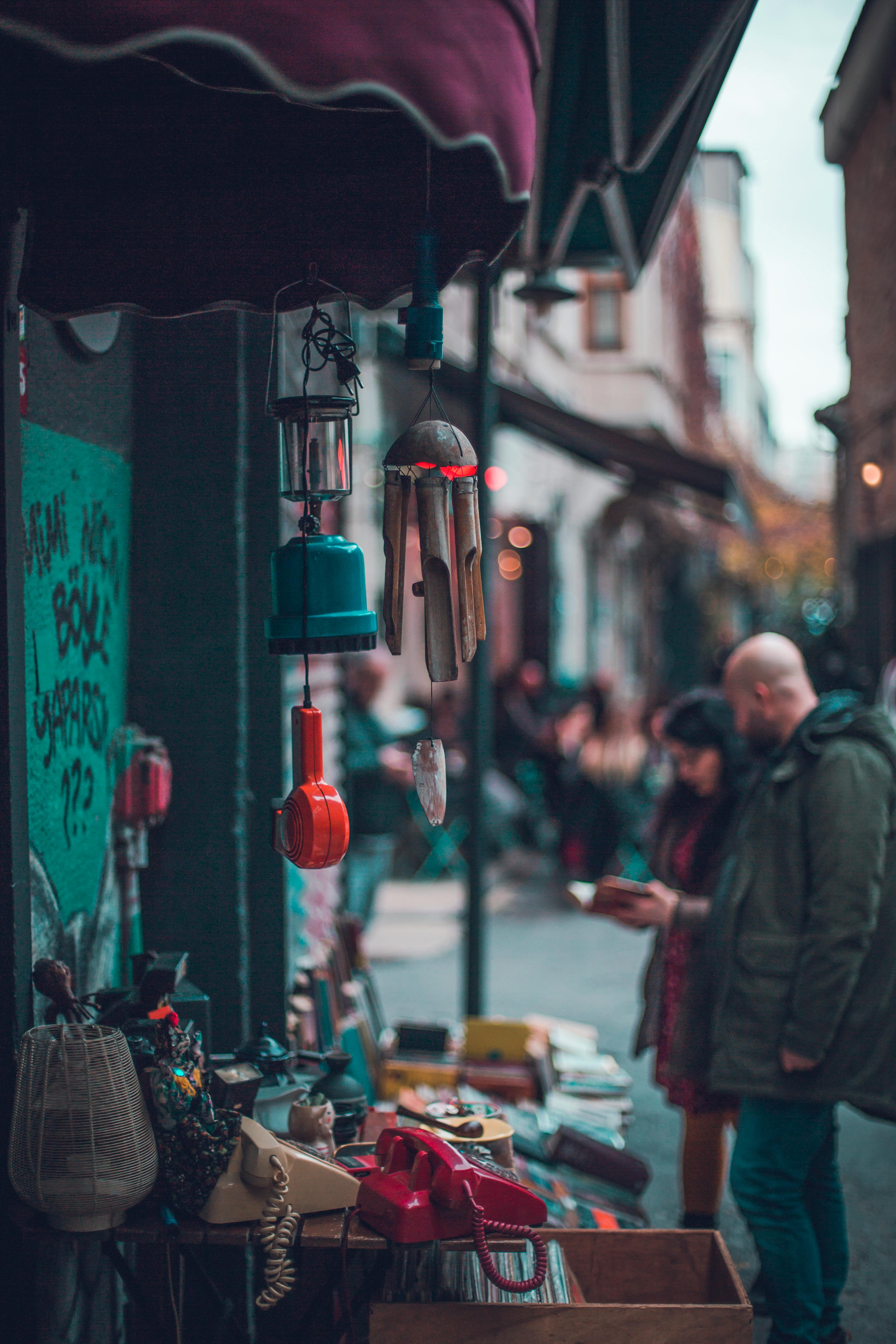Welcome to the World of Breathing Comfort!
When it comes to improving your health, there is a simple and practical solution that you may not have considered – using a humidifier. Whether you are someone who suffers from allergies, asthma, or simply dry skin, incorporating a humidifier into your daily routine can make a world of difference.
Humidifiers work by adding moisture to the air, which can help alleviate a multitude of health issues. One of the most significant benefits of using a humidifier is improved breathing. The added moisture helps to keep your airways hydrated, making it easier to breathe, especially for those with respiratory conditions.
Additionally, a humidifier can help reduce the frequency and severity of headaches. Dry air can often lead to sinus congestion and dryness, which can trigger painful headaches. By maintaining an optimal level of humidity in your surroundings, you can lessen the chances of experiencing such discomforts.
Now, you may be wondering which type of humidifier is best suited for your needs. There are various options available, including cool mist, warm mist, and ultrasonic humidifiers. Each type has its advantages and caters to different preferences and requirements.
In our upcoming blog posts, we will delve deeper into these different types of humidifiers, their features, and which one might be the perfect fit for your home. We’ll also provide you with valuable insights and tips on how to select the best humidifier specifically tailored to your needs.
Creating a healthier and more comfortable living space is within your reach. By introducing a humidifier into your home, you can enjoy the benefits of easier breathing, relieve dry skin, and even enhance the quality of your sleep.
So, stay tuned for our next blog post, where we explore everything you need to know in “When to Visit Japan: A Month-by-Month Guide to the Best Travel Experience”. Discover the best time to embark on your Japanese adventure and make the most of this incredible destination.
Remember, your health and well-being matter, and with the right information, you can create a living environment that supports your needs. Let’s dive deeper into the world of humidifiers to enhance your overall quality of life.

What is the Ideal Time to Experience the Best of Japan? A Comprehensive Guide
Japan offers diverse and captivating experiences throughout the year. Whether you are intrigued by the cherry blossoms in full bloom, mesmerized by the autumn foliage, or seeking an adventurous winter getaway on the ski slopes, timing your visit to Japan is essential. In this article, we will explore the ideal time to visit this enchanting country, unraveling the unique charms and attractions each month has to offer.
For those who crave the beauty of cherry blossoms, late March to early April is the perfect time to visit Japan. Witnessing the delicate pink petals drifting in the gentle breeze is a truly magical experience that should not be missed. As spring envelops the entire nation, parks, gardens, and historic sites burst with color and joy, creating an atmosphere of celebration.
As the temperature rises and summer arrives, Japan turns into a vibrant and lively destination. June to August welcomes a myriad of exciting festivals, such as the lively Gion Matsuri in Kyoto and the dazzling dancing procession of Nebuta Matsuri in Aomori. Delight in the electrifying energy of these events and immerse yourself in Japanese culture at its finest.
The autumn months, from September to November, paint the landscape in breathtaking hues of red, orange, and gold. The country transforms into a mesmerizing wonderland as the leaves change, offering a sight that is incomparable. Admire the stunning foliage in popular destinations like Kyoto’s Arashiyama Bamboo Grove or Nikko’s Toshogu Shrine.
For winter sports enthusiasts, Japan’s snowy wonderland awaits. From December to February, skiing and snowboarding enthusiasts can head to popular resorts like Niseko in Hokkaido or Hakuba in Nagano. Immerse yourself in the exhilaration of gliding down powdery slopes, surrounded by breathtaking scenery.
Embark on a journey through Japan that suits your preferences and interests by choosing the perfect time to visit. In the next part of this series, we will delve deeper into each month, providing a comprehensive guide to the unique experiences and attractions you can expect. Stay tuned for an immersive exploration of Japan’s year-round beauty.

January
January is a great time to visit Japan if you’re a fan of winter sports and breathtaking snowscapes. The country’s ski resorts are at their prime, offering an exhilarating experience for skiers and snowboarders. Hokkaido, famous for its powdery snow, is a must-visit destination during this month. You can hit the slopes in Niseko, Furano, or Rusutsu and enjoy some of the best powder snow in the world.
If skiing isn’t your thing, don’t worry. January also marks the start of the New Year celebration in Japan. During this time, you can witness the unique cultural tradition of Hatsumode, where people visit shrines and temples to make their first prayers of the new year. You can experience the bustling atmosphere at popular shrines like Meiji Shrine in Tokyo or Fushimi Inari Taisha in Kyoto.
February
In February, the winter charm continues in many parts of Japan. It’s a fantastic month to visit the northern regions, such as Tohoku and Hokkaido, which offer stunning winter landscapes. You can enjoy activities like snowshoeing, ice fishing, and even ice festivals. The Sapporo Snow Festival is a major highlight, where you can marvel at incredible snow and ice sculptures.
If you’re looking for a unique cultural experience, February is the time for Setsubun, an event where people toss beans to ward off evil spirits and welcome good luck for the year ahead. This tradition can be observed in shrines, temples, and even homes throughout Japan.
March
March marks the end of winter and the transition to spring in Japan. This month offers a unique blend of winter activities and the beginning of cherry blossom season.
For those who want to catch the last of the winter snow, head to the Japan Alps or regions like Tohoku, where you can still enjoy skiing, snowboarding, and snow festivals.
In terms of cherry blossoms, March becomes the time to visit southern regions like Kyushu and Okinawa. While the cherry blossoms start blooming earlier in these areas, they gradually make their way north, transforming the country into a magical pink wonderland.
April
April is arguably the most popular month to visit Japan due to the stunning cherry blossom season. The ephemeral beauty of these delicate flowers attracts locals and tourists alike, creating a festive atmosphere across the country.
You can witness hanami (flower viewing) parties in parks, where people gather to appreciate the cherry blossoms while enjoying food and drinks. Popular spots for cherry blossoms include Tokyo’s Ueno Park, Kyoto’s Maruyama Park, and Osaka Castle Park.
Aside from cherry blossoms, April is a great time to visit the ancient city of Kyoto. The Gion Sakura Festival takes place here, offering a chance to see geisha and maiko performers against the backdrop of cherry blossoms.
May
May brings pleasant weather to Japan, with milder temperatures and clear skies. It’s a fantastic time to explore the country’s vibrant cities and enjoy outdoor activities.
Golden Week, a series of national holidays, falls in late April and early May. This means you can experience a bit of Japanese culture while enjoying a longer vacation period. However, keep in mind that popular tourist destinations can be crowded during Golden Week, so plan accordingly.
If you’re a nature enthusiast, May offers the opportunity to witness the Fuji Shibazakura Festival at the base of Mount Fuji. The festival showcases a vast carpet of pink moss phlox flowers, creating a stunning sight against the iconic mountain backdrop.
June
June marks the beginning of summer in Japan, bringing warmer temperatures and higher humidity. While it’s not the peak tourist season, June offers its own unique attractions.
If you’re interested in traditional culture, don’t miss the Gion Matsuri in Kyoto. This month-long festival is considered one of Japan’s biggest and most famous, featuring stunning parades, traditional performances, and vibrant floats.
In terms of natural beauty, June is the time for hydrangeas to bloom. Visit Hakone or Kamakura to witness these stunning flowers in full bloom, adding a pop of color to the surroundings.
July
July brings vibrant summer festivals known as Matsuri. These celebrations feature spectacular parades, traditional dances, and fireworks, making it an exciting time to experience Japanese culture.
One of the most famous festivals in July is the Gion Matsuri in Kyoto. It’s a month-long celebration filled with processions, traditional music, and street stalls. Another notable festival is the Tenjin Matsuri in Osaka, which includes a river procession and fireworks display.
If you’re seeking cooler temperatures, head to the northern region of Tohoku, particularly Aomori. In July, the Nebuta Matsuri takes place, showcasing giant illuminated floats depicting mythical figures.
August
In August, summer in Japan is in full swing. With warm weather and plenty of sunshine, it’s the ideal time for outdoor activities and festivals.
Matsuri celebrations continue into August, with one of the most famous being the lively and energetic Bon Odori festivals held throughout the country. These events feature traditional dances performed in yukata (light summer kimono) and are accompanied by taiko drumming.
If you’re a fan of fireworks, August is the month to be in Japan. Spectacular fireworks festivals light up the skies, such as the Sumida River Fireworks Festival in Tokyo and the Lake Biwa Fireworks Festival in Shiga. It’s a magical experience to watch the colorful explosions reflected on the water.
September
September marks the transition from summer to autumn in Japan. With cooler temperatures and fewer crowds, it’s a wonderful time to explore the country.
If you’re a nature lover, visit Hokkaido in early September to witness the stunning autumn foliage. The Daisetsuzan National Park offers breathtaking views as the colors change from vibrant greens to rich reds and oranges.
September is also the time for traditional festivals like the Hachiman Matsuri in Kamakura or the Kishiwada Danjiri Matsuri in Osaka. These events showcase traditional performances, karaoke competitions, and lively procession of festival floats.
October
October brings cooler weather and picturesque autumn landscapes across Japan. It’s a fantastic time to immerse yourself in nature and explore the country’s beautiful gardens, temples, and hiking trails.
The Koyo season, also known as the autumn foliage season, begins in October. Some of the best places to witness this stunning natural phenomenon include Kyoto’s Arashiyama Bamboo Grove, Nikko’s Toshogu Shrine, and Hakone’s Lake Ashi.
For a unique cultural experience, visit Okunchi Festival in Nagasaki. This traditional event features a parade of giant floats, traditional dances, and fireworks displays, offering a glimpse into the rich history and culture of Japan.
November
November is another beautiful month to visit Japan, thanks to the vibrant autumn colors that spread across the country. With mild temperatures, it’s a great time to explore the outdoors.
If you’re a fan of Japanese gardens, November offers a stunning display of autumn foliage. Tokyo’s Rikugien Garden and Kyoto’s Kiyomizu-dera Temple are particularly famous for their autumnal beauty.
November is also the time for momiji-gari, which refers to the tradition of enjoying the autumn leaves. You can explore popular hiking spots like Mount Takao or visit rural areas like Yamagata or Tochigi to experience the full glory of nature’s color palette.
December
December brings festive cheer and winter wonderlands to Japan. While it’s not the peak season for tourism, it offers unique experiences and a chance to explore the country without the crowds.
If you’re a skiing enthusiast, December marks the start of the ski season in the Japanese Alps. Resorts like Hakuba, Nozawa Onsen, and Shiga Kogen welcome visitors looking for thrilling winter sports activities.
Christmas decorations adorn cities like Tokyo and Osaka, creating a festive atmosphere. Illumination events, such as the Winter Illuminations in Kobe’s Luminarie and Tokyo’s Midtown Christmas, showcase dazzling light displays that bring the city to life.
In terms of traditions, don’t miss the Omisoka celebrations on New Year’s Eve. Many Japanese families gather to eat traditional dishes, visit temples, and welcome the new year with joy and gratitude.
According to recent travel data, the best time to visit Japan, considering the combination of weather, festivals, and overall experience, is during the cherry blossom season in April. The enchanting beauty of the blooming sakura trees combined with the lively atmosphere of hanami parties creates an unforgettable travel experience.

When to Visit Japan: A Month-by-Month Guide to the Best Travel Experience
Conclusion
To conclude, this month-by-month guide has provided valuable insights into the best time to visit Japan, taking into consideration various factors such as weather, festivals, and special events. Understanding the seasonal variations and their impact on travel experiences can greatly enhance your trip to this fascinating country.
Starting in January, Japan offers a magical winter wonderland with its famous snow festivals, particularly in Sapporo and Hokkaido. February brings plum blossoms that symbolize the arrival of spring, offering a unique visual delight. March marks the arrival of cherry blossoms, which paint the country in stunning shades of pink and white. April is a great time to witness the cherry blossoms in full bloom, especially in Kyoto and Tokyo.
As we move into May, the weather becomes warmer, and it is the perfect time to explore the colorful and beautiful landscapes of Japan. June signifies the start of Japan’s rainy season, which can create a unique atmosphere, especially in rural areas. July and August see hot and humid weather, but it also provides an opportunity to experience exciting summer festivals such as Gion Matsuri in Kyoto and Obon festivities nationwide.
September brings comfortable temperatures with the added bonus of stunning autumn foliage in places like Nikko and Kyoto. October is another great month to explore Japan, with pleasant weather and breathtaking autumn colors. November offers a mix of autumn foliage and beautiful fall events, such as the renowned Tori-no-Ichi markets in Tokyo.
Finally, December greets visitors with winter illuminations and festive markets, creating a joyful atmosphere throughout the country. Whether you are seeking winter wonders, cherry blossom marvels, or fall foliage, this month-by-month guide ensures that you can plan your visit to Japan at the perfect time, maximizing your travel experience and creating memories that will last a lifetime.




